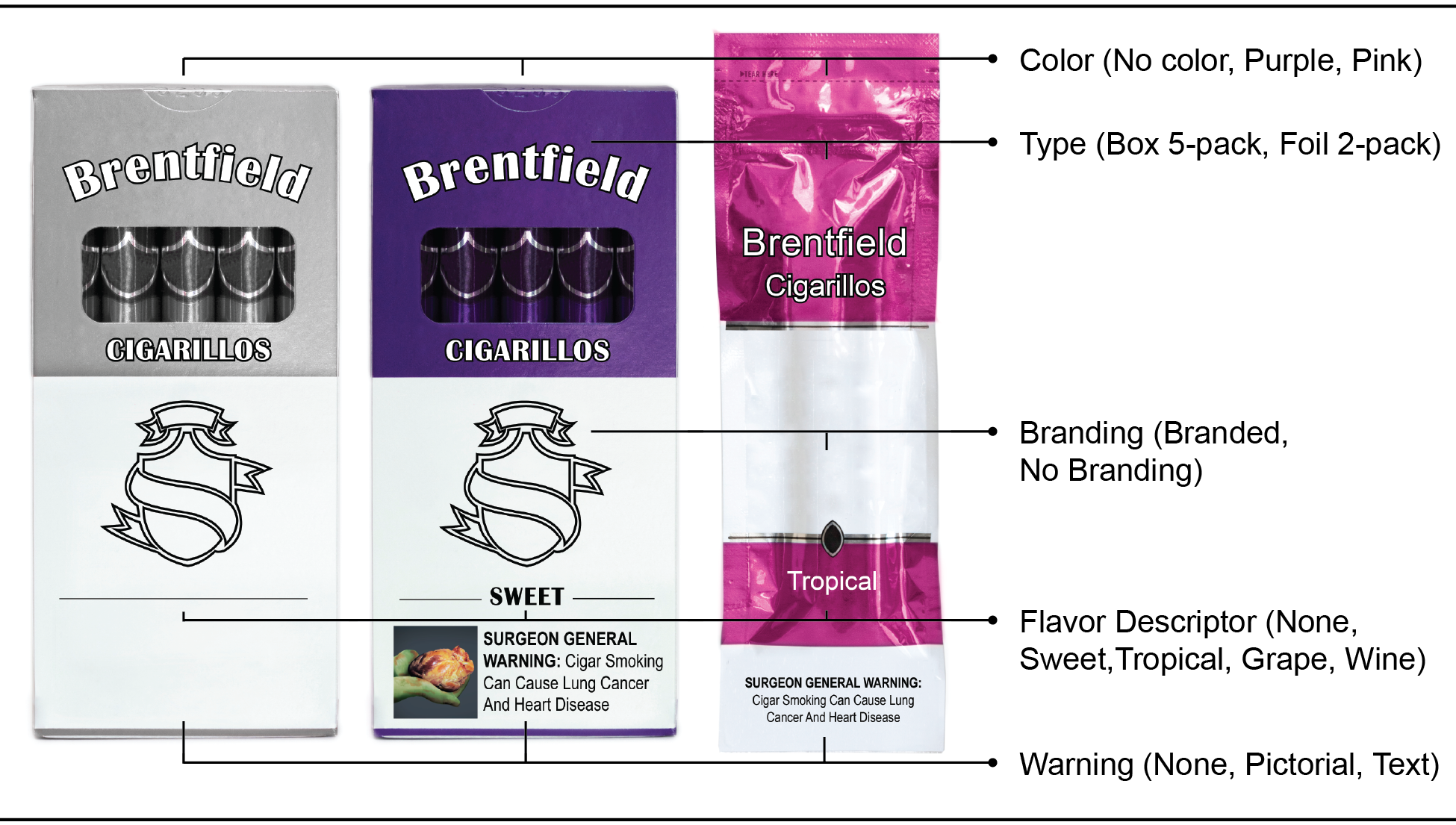

Text and pictorial warnings about the health effects of little cigars and cigarillos didn’t fully curtail the appeal of bright colors and descriptions of flavors on packaging, a study by University of North Carolina Lineberger Comprehensive Cancer Center researchers found.
In the absence of federal regulations for flavors on cigarillos and little cigars in the United States, UNC Lineberger researchers wanted to understand the impact that flavor descriptions and colors in packaging have on the products’ appeal. The researchers surveyed 2,664 young adults who were current users, never users, or past users, finding cigarillo packs with colors and containing a flavor descriptor were rated more positively for taste and smell. The warnings didn’t fully mitigate the draw of the packaging.
“This is the first quantitative evidence that cigarillo packaging can influence young adults’ perceptions of these products, and can make them more appealing,” said the study’s first author Clare Meernik, MPH, social and clinical research specialist in the UNC School of Medicine Department of Family Medicine. “Even on packs that include a text or pictorial warning, packs with colors or flavor descriptors were rated more favorably on taste, smell and appeal.”
Little cigars and cigarillos are increasingly popular, researchers reported, as they are more affordable than many other tobacco products and come in multiple appealing flavors. And while restrictions are in-place for flavors in cigarettes in the United States (although mint flavors are still allowed), new regulations from the U.S. Food and Drug Administration (FDA) for cigarillos, cigars and other tobacco products do not prohibit product flavors.
Around the globe, some countries require plain packaging for tobacco products, and others mandate the packaging include graphic warnings about tobacco health effects. Studies have shown that unadorned cigarette packs are seen as less appealing, and the cigarettes were found to be less satisfying, and having lower taste and quality.
“This is the first quantitative study that provides evidence showing that commonly used cigarillo packaging elements influence both tobacco users and non-users,” said UNC Lineberger’s Adam Goldstein, MD, MPH, the study’s senior author and a professor in the UNC School of Medicine Department of Family Medicine. “These findings have important policy implications nationally, given the FDA’s recently extended regulatory authority over all tobacco products, including cigarillos.”
To understand the effect of packaging for emerging products like cigarillos, researchers assigned participants to randomly rate packages that varied on different design elements, including flavor descriptor such as sweet or tropical, pack color such as pink or purple, shape, branding, and warning type. Packs with various color and flavor descriptors impacted taste, smell or appeal among users and had an even greater impact on perceptions of young adults who had never used cigarillos.
While cigarillo packs with pictorial warnings were seen as having a less favorable taste, and packs with either a text or pictorial warning were seen as having a less favorable smell, the warnings did not moderate the effects of flavor descriptor or color.
“In addition to a ban on flavor descriptors, and their accompanying product flavoring, enacting stricter regulations on imagery, such as plain packaging regulations that might eliminate colors on cigarillo packaging, are warranted and might reduce cigarillo use,” the researchers reported.
The study was funded by a University of North Carolina Lineberger Comprehensive Cancer Center Developmental Award funded through the University Cancer Research Fund.
In addition to Meernik and Goldstein, other authors included Leah M. Ranney, Allison J. Lazard, KyungSu Kim, Tara L. Queen, Aya Avishai, Marcella H. Boynton, and Paschal J. Sheeran.
